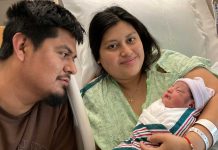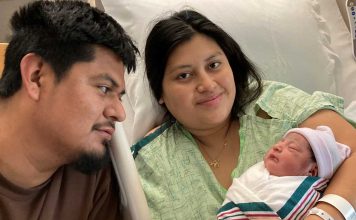So far this year, county health officials have confirmed nearly
twice as many cases of whooping cough than all of last year. Six
cases have been confirmed in Gilroy and five in Morgan Hill.
So far this year, county health officials have confirmed nearly twice as many cases of whooping cough than all of last year. Six cases have been confirmed in Gilroy and five in Morgan Hill.
“There is an epidemic in California,” said Joy Alexiou, a spokeswoman for the Santa Clara County Public Health Department, clarifying that “the word ‘epidemic’ shouldn’t be a panic word for people. It just means there are more cases than you would normally expect. It’s not a cause for panic but a cause for concern.”
Babies – particularly newborns – are most susceptible to the highly contagious disease, which is caused by the bacterium Bordetella pertussis, because they do not receive the first in a series of immunizations until two months old. Subsequent shots are administered at 4, 6 and 18 months and again between the ages of 4 and 6. Infants are at risk for severe illness and even death from whooping cough until all three of their first shots are complete. Nearly half of all infants get whooping cough from their parents.
There have not been any deaths attributed to the illness in Santa Clara County this year.
“The most important thing is to protect those young kids, especially babies,” said Marty Fenstersheib, a public health officer. “It’s the babies that are the most at risk. We need to make sure everyone around them is vaccinated. If you have a newborn, or you care for a newborn, you need to be vaccinated.”
Until 2005, only children could get the vaccine against whooping cough, but immunity begins to wear off in adolescence, Fenstersheib said. With the development of an adult vaccine, doctors now recommend getting vaccinated again around age 10. Even if an adult was vaccinated as a child, it has likely worn off and they should get the vaccine again, he said.
Everyone who comes in contact with infants less than one year of age should be vaccinated to protect the infant, public health officials said. Adults and children older than 10 should contact their healthcare provider and ask for the Tdap vaccine, Fenstersheib said.
Pregnant women may be vaccinated against whooping cough during the last three months of pregnancy or after giving birth. It’s best for fathers to be vaccinated two weeks before the birth of their baby, according to public health.
What often starts off like the common cold – runny nose, a touch of fever, aches and pains and mild cough – whooping cough is recognizable because it typically persists longer than the other symptoms and because of its distinct sound.
“The problem is that after a couple weeks, the cough, which was mild initially, turns really severe,” Fenstersheib said. It got its name for the “whooping” sound made when someone suffering from the disease coughs so violently that they have to gasp for air in between coughs.
Though public health departments note cases of whooping cough every year, doctors notice a cyclical trend and every few years, the number of cases skyrockets, Fenstersheib said. The disease is caused by a bacteria, not a cold virus, and is spread through coughing and sneezing.
The county health department has been working closely with obstetricians and pediatricians to spread awareness and make sure children are up to date on vaccines.
Public Health Immunization Clinic
Mon-Fri (except Thurs): 8:15 – 11:30 a.m. and 1 – 4 p.m.
Thurs: 8:15 – 11:30 a.m. and beginning July 15, 4 – 7 p.m. (for the evening clinic you must enter through the doors marked West 1 Entrance)
976 Lenzen Ave., Suite 1500, San Jose
$15 fee
Patients must be 11 years or older, living with or planning on caring for an infant less than one year of age within the next year and not have a healthcare provider or medical insurance. Pregnant women or those who have recently given birth should receive the Tdap vaccine from their obstetrician.
More information: call the Public Health Information Line at 408-885-3980 or visit California Department of Public Health or Centers for Disease Control.














